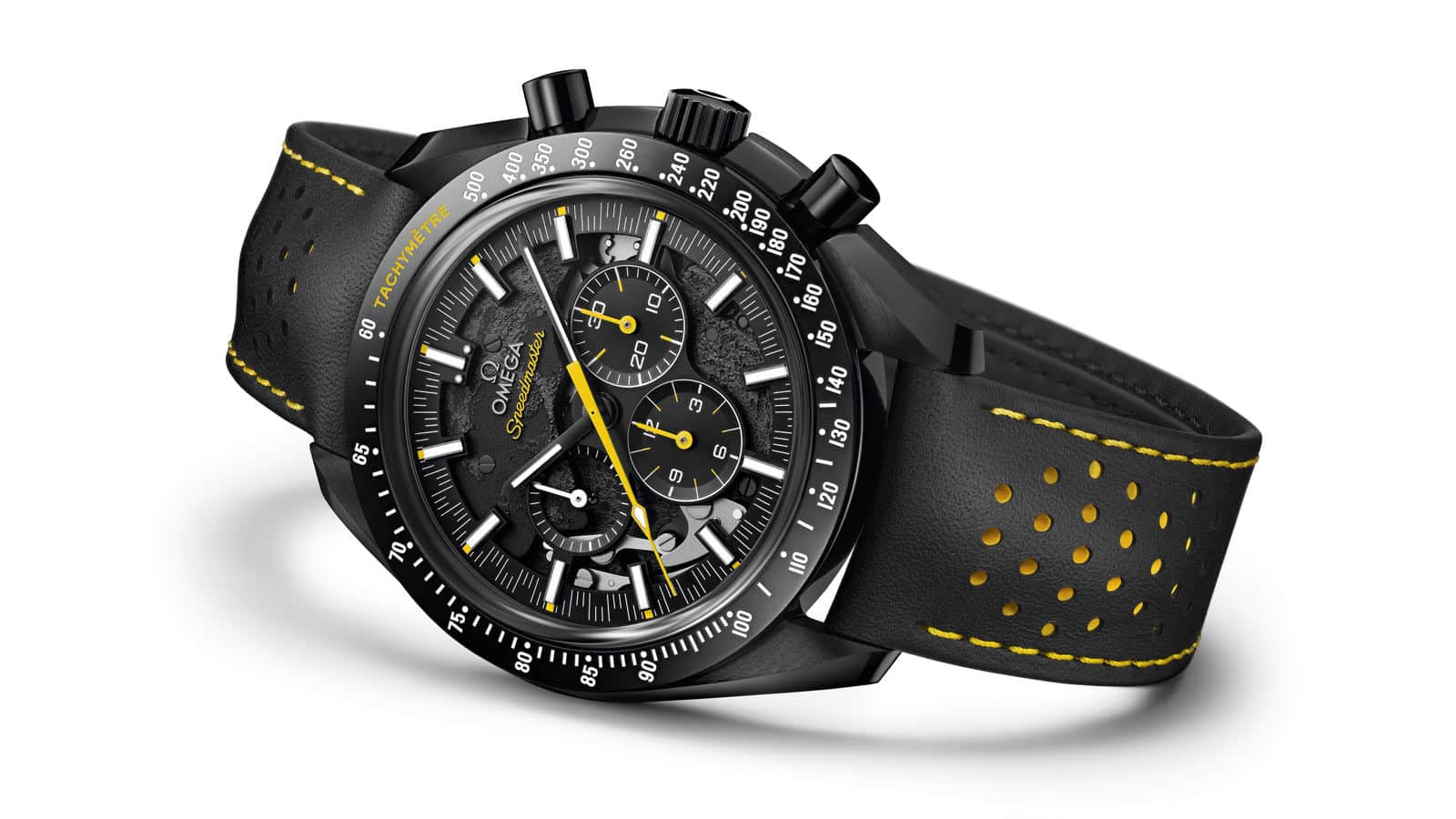2018 marks the 50th anniversary of the Apollo 8 mission that took three American astronauts to the hidden face of the moon, a human adventure retold on the dial and caseback of the new Speedmaster “Dark Side of the Moon” chronograph.
Introduced at Baselworld 2018, the Speedmaster “Dark Side of the Moon” Apollo 8 celebrates the famous mission that took three astronauts outside of the Earth’s orbit and to the moon’s orbit for the first time. This heir of a long line of elegant watches launched 61 years ago, including some that have marked human history, features a miniature depiction of the uneven surface of the Queen of the Night. We look back on the journey of a space pioneer.
The genealogy of a legend
In 1957, Omega introduced a trio of watches, including a chronograph named the Speedmaster. The reference CK2915 with its 39mm-wide steel case and a dark dial with “Broad Arrow” hands was the first of what would later become a major collection of watches.
Two years later, a model with a black bezel including a tachymeter and Alpha hands was produced by the Swiss brand. This reference, the CK2998, was worn by the Swiss-born American astronaut Walter Schirra (1923-2007) on 3 October 1962 as part of the Mercury programme and so became the first watch in space.
In 1963, the Speedmaster adopted the stick-shaped hands that are still around today, and underwent a whole battery of tests from 1964 onwards, before being approved in 1965 by Nasa for all manned space missions. It was given its nickname, the Moonwatch, when it was part of the Apollo 11 mission in 1969, during which mankind walked on the moon surface for the first time.
The Speedmaster’s face remained unchanged, excepting a few details, until 1968, when the “Racing” dial with its minute track on two levels and its colour code combining red and orange was introduced in the Speedmaster collection.
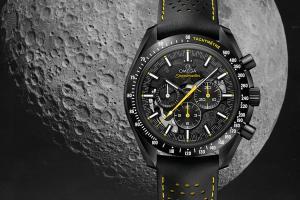
A historic mission
Even though it is not as famous as the Apollo 11 mission that led to Neil Armstrong (1930-2012) and Edwin “Buzz” Aldrin (1930) to walk on the moon on 21 July 1969, the Apollo 8 mission still represents a huge achievement for humanity. It was during this voyage, part of Nasa’s Apollo space programme (1961 to 1975) and launched at the initiative of John F. Kennedy (1917-1963), that human beings first left the Earth’s orbit and orbited the moon.
During this extraordinary adventure the Earth was also seen in its entirety for the first time and the dark side of the moon was revealed.
On 21 December 1968, the Apollo 8 module took off from the Kennedy Space Centre, set up in 1959 in Florida. On board, the crew consisted of three US astronauts: Frank Borman (1928), the mission commander, James Lovell (1928), the command module pilot and William A. Anders (1933), the lunar module pilot. After a flight of a little under 56 hours, they entered the sphere of the moon’s gravitational pull, then continued on behind the moon, to its famous dark side, in the 69th hour of the flight. Before losing contact with the crew on Earth (with 34 minutes of radio silence), James Lovell tried to reassure everyone with a simple optimistic phrase: “We’ll see you on the other side”. He later described what he saw: “The Moon is essentially grey, no colour. Looks like plaster of Paris or sort of a greyish beach sand. We can see quite a bit of detail (…) The craters are all rounded off”. The three astronauts also witnessed the Earthrise, immortalised in a photo taken by William A. Anders, first in black and white, and then i colour.
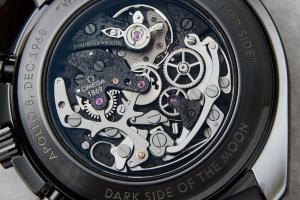
The two faces of the moon
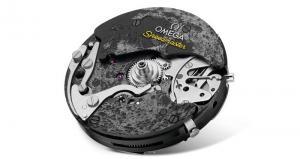
Half a century later, this human adventure inspired Omega to create a watch in its Speedmaster collection, the “Dark Side of the Moon”, the first ceramic watch by the Biel/Bienne watchmakers, and with its own line of products since its release (and success!) in 2013. Since the name and colour of the best-seller was directly inspired by the story of Apollo 8, it seemed almost natural to dedicate a timepiece to a mission that was filled with great historic events.
The Speedmaster “Dark Side of the Moon” Apollo 8 depicts both faces of the moon, the bright one that can be seen from our planet, and the dark, hidden one that was seen by Frank Borman, James Lovell and William A. Anders as they flew above it in 1968. The meticulous design of the watch, with its open-work dial, means that the details of the crater-filled lunar surface can be shown on the watch face. The hand-wound calibre 1869, which is an aesthetically redesigned version of the calibre 1861, has been blackened and engraved with a laser to reproduce as faithfully as possible the uneven terrain described by James Lovell. The dark landscape, protected by a sapphire glass, is energised by touches of yellow, a dynamic colour evoking speed, and also to be seen on the central seconds hand and the blued totaliser hands of the chronograph (the minutes at 3 o’clock and the hours at 6 o’clock). The hours and minutes are shown by two black, stick-shaped hands, like most Speedmaster watches, and coated with white Super-LumiNova®, while the seconds are shown in a counter at 9 o’clock.
A light in the darkness
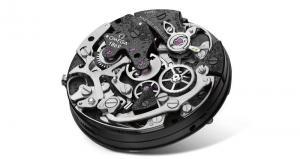
With a nod to its own history, Omega has used the codes of its “Racing” watches from 1968, with a minute track made up of square shapes on two levels and featuring yellow varnished cubes. The rectangular hour markers around the chapter ring are white and luminous. All the elements coated with white Super-LumiNova® emit a green glow when the watch is in darkness.
The case is wholly made of black ceramic, including the chronograph monopushers and the crown stamped with the brand’s phosphorescent logo. Topped with a bezel with a tachymetric scale, it is exactly 44.25mm wide, is watertight down to 50m and has a sapphire glass caseback to reveal part of the movement evoking the dark side of the lunar surface. These elements are encircled by a ring with three phrases engraved in English: “Apollo 8, Dec 1968”, the legendary quotation by James Lovell “We’ll see you on the other side” and “Dark Side of the Moon”.
This new watch by Omega is worn on the wrist with a perforated black leather strap with yellow topstitching and lined with rubber in the same dynamic colour.
